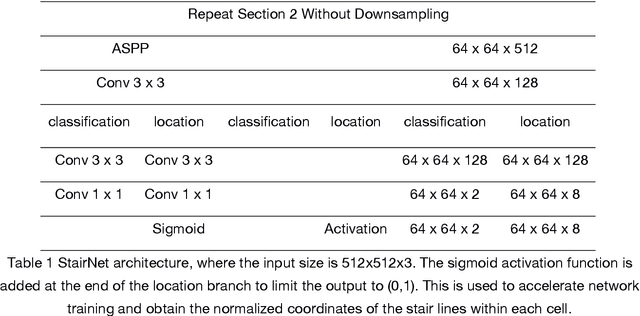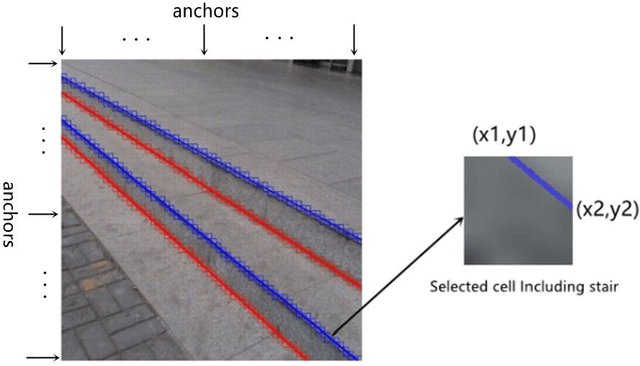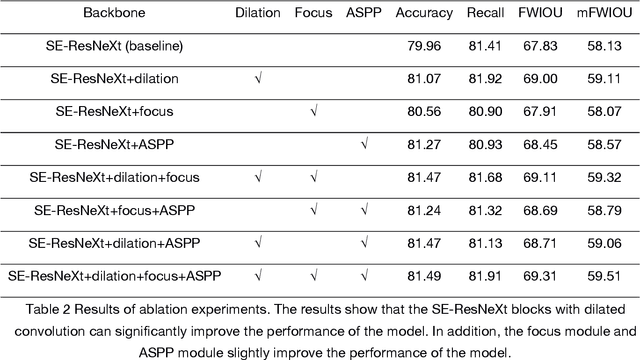Deep Leaning-Based Ultra-Fast Stair Detection
Paper and Code
Feb 04, 2022



Staircases are some of the most common building structures in urban environments. Stair detection is an important task for various applications, including the environmental perception of exoskeleton robots, humanoid robots, and rescue robots and the navigation of visually impaired people. Most existing stair detection algorithms have difficulty dealing with the diversity of stair structure materials, extreme light and serious occlusion. Inspired by human perception, we propose an end-to-end method based on deep learning. Specifically, we treat the process of stair line detection as a multitask involving coarse-grained semantic segmentation and object detection. The input images are divided into cells, and a simple neural network is used to judge whether each cell contains stair lines. For cells containing stair lines, the locations of the stair lines relative to each cell are regressed. Extensive experiments on our dataset show that our method can achieve high performance in terms of both speed and accuracy. A lightweight version can even achieve 300+ frames per second with the same resolution. Our code and dataset will be soon available at GitHub.
 Add to Chrome
Add to Chrome Add to Firefox
Add to Firefox Add to Edge
Add to Edge